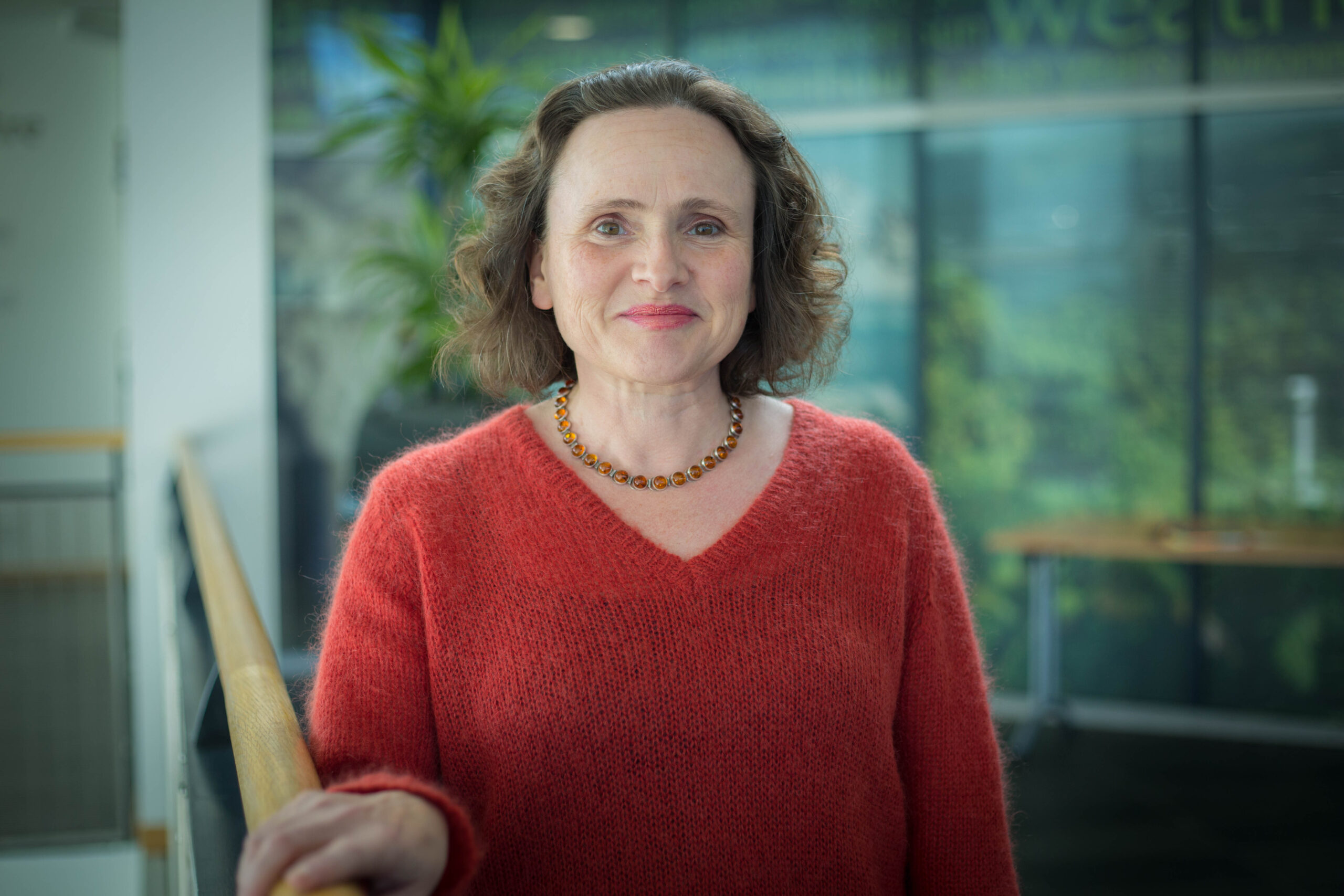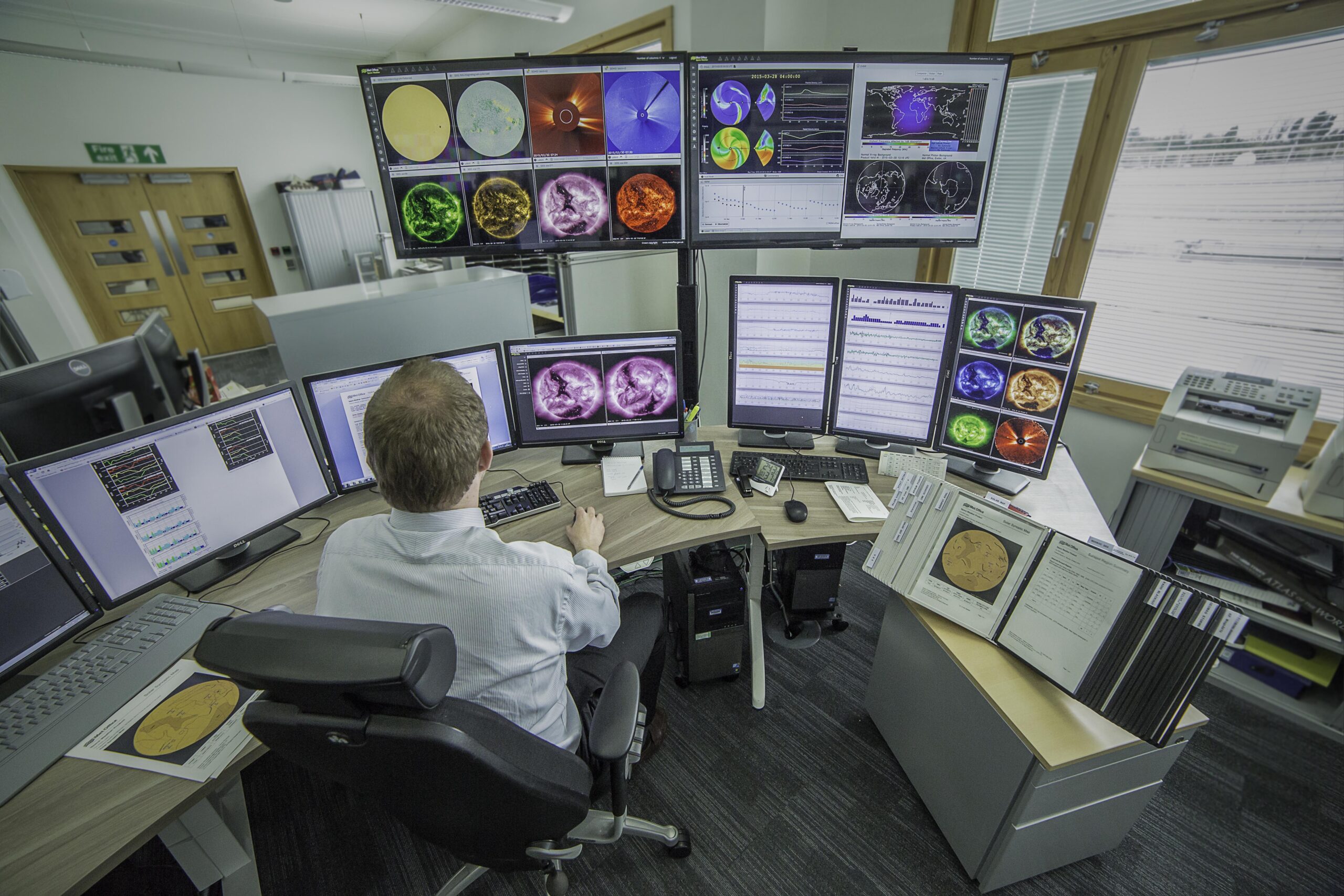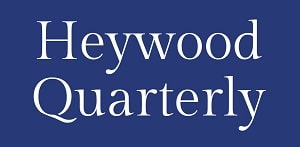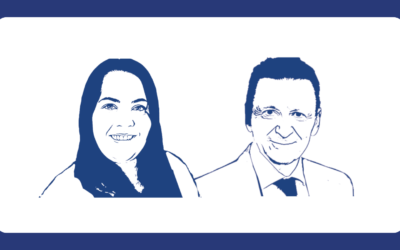Penny Endersby talks to Tim Dickson about her journey from specialist researcher to running the Met Office
The days when specialists, notably economists, operated mostly in Whitehall silos and took a backseat to ‘generalists’ were recalled recently in Heywood Quarterly by Lord Terry Burns, former Permanent Secretary to the Treasury. Something similar could also have been said at the time about scientists in government.
When you meet Professor Penny Endersby, a former researcher in fuel cells, materials for armoured vehicles and cyber defence who now runs the Met Office, you realise how dramatically things have changed.
Penny is front and centre in an organisation with 2300 people and an annual turnover approaching £300m, which not only predicts our weather but is the country’s leading engineering and research centre for predicting climate change.
Her journey from backroom boffin to chief executive of the Met Office, a government Trading Fund Agency owned by the Department for Science, Innovation and Technology, is an inspiring story for others in the Civil Service in an era when the profile of science in public life has arguably never been greater.
The political dimension
In some respects she is reluctant to over-emphasise change. “I think the fundamental principle that government has a whole load of things to discharge that need scientific expertise, that the Government pays to have that expertise available, and that it expects scientists to deploy their time and effort in pursuit of meeting those needs is much the same as it always was.”
In areas like policing and health, she acknowledges “science is now particularly key”, but even in departments where it may seem less fundamental (DCMS, for instance), there are chief scientific advisers who provide advice to ministers and discuss the implementation of policy relating to science, technology, engineering and mathematics (STEM). “There are few areas of government where analytical rigour doesn’t benefit your decision making.”
A smooth relationship between politicians and scientists has always been vital to good governance, but today’s challenges have inevitably introduced new tensions. In recent years, for example, in large part due to Covid, scientists have emerged from the shadows as more public figures expected both to articulate the Government’s message and remain true to their reputation for integrity and independence (in a world where polarisation and the spread of misinformation have grown).
Mutual understanding, says Penny, is more important than it has ever been. “There was a time when I admit that I felt ministers didn’t really give science the respect it deserved and were sometimes ignoring sound scientific principles in their policymaking. It took Sir Mark Walport, who was Government Chief Scientific Adviser then, to point out that while that may have been true, scientists were just as guilty of not understanding politics, and that we (scientists) needed to get better at that.”
“Dialogue is so important – we should always explain clearly to politicians what the science is telling us, including the nuance and complexity, the inevitable ifs and buts – but we should also acknowledge that politicians may be facing pressures that sometimes have to take priority.”
When it comes to scientific influence in government, Penny is particularly excited at the moment about the prospect of new research boards to support the current Labour Government’s five missions – growing the economy, an NHS fit for the future, safer streets, opportunity for all and making Britain a clean energy superpower – that underpin Sir Keir Starmer’s promised ‘decade of renewal’.
“These boards, I hope, will be able to seek out from government which things it wishes it knew more about, or could do better, and then turn the attention of government scientists to addressing them. The magic could be in that (sometimes elusive) step between doing useful science and getting ministers to get the findings turned into meaningful policy change.” It will require funding to achieve results at scale, she believes – in which respect UK Research and Innovation, the non-departmental public body that directs funding, has an important role – and a willingness for those on the delivery side to change the way they do things.
A good example is the net zero mission “where we need to make sure that we don’t just build a clean power network but that we distribute the power from turbines and solar cells around the country to the places where it is really needed.” Without good delivery, she suggests, citizens will have a lower tolerance for short-term expenditure.
She is “very supportive” of DSIT’s determination to make science and especially technology visibly beneficial to the citizen, for people to see science and technology as a force for good in their lives, and to ensure that those benefits are felt equitably among citizens. Working across departments is an important dimension: “We are bringing Met Office expertise in dealing with data and digital to support initiatives such as the National Data Library, both because we hold data which taxpayers have funded and which could generate more value when made more available to others, and because we have skills which can help other parts of the public sector to be more effective.”

From lab to leadership….
Penny’s own career in applied research means she is steeped in the idea that science should deliver direct and measurable benefits. After a natural sciences degree at Cambridge, she went to work on solid oxide fuel cells at British Gas (her university sponsor), quickly joining the Ministry of Defence (MoD) and its Fort Halstead research site in London, before it moved to Porton Down and became the Defence Science and Technology Laboratory (Dstl). Her work there included a project to see if electrical energy could repel incoming projectiles and replace heavy armour, thereby making armoured vehicles lighter and more versatile. While the science they came up with was sound, operating such vehicles safely with personnel on board in conflict zones proved more difficult.
“At the time we were no longer expecting to face Russia across the Polish plains. We were much more into peacekeeping roles in Bosnia, or urban warfare in places like Baghdad. For these challenges we needed more agile vehicles, not great, big, enormous tanks.”
Penny’s attitude to management in those days bordered on the ‘allergic’, and she only applied to lead an electrical team in the MOD because she didn’t want non-specialists telling her what to do. It was an important turning point as she discovered in her new role a passion for developing other people and an appreciation for the power of teamwork over individual effort. In 2015, she was put in charge of Dstl’s Cyber and Information Systems Division, working on a very different security challenge and in an area of technology which was a long way from her roots as a physicist.
That cyber experience, on top of her physics and engineering background, was one of many reasons why she was an ideal candidate to run the Met Office (the first woman to do so when she was appointed in 2018).
The Met Office has come a long way since it was founded in 1854 by Vice-Admiral Robert Fitzroy, captain of HMS Beagle – though the first proper storm warning service (now known as the Shipping Forecast), inspired by the 1859 sinking of the Royal Charter steam clipper in the Irish Sea, was not introduced until 1861. Today vast supercomputers drive the organisation’s data operations, and under Penny’s leadership new investments in data science, machine learning and artificial intelligence will be critical to meeting the challenges of the future. So what about the impact of AI?
Artificial Intelligence
“I’m still a bit ambivalent on whether AI is a radical transformation in the way we’ll do things, both in meteorology and more widely, or whether it’s a useful tool in the box that will become something we all use regularly, like we use the internet or a computer, but doesn’t tear up everything we’ve done in the past.”
“AI has shown great potential for being a really different way to forecast weather, thanks to a lot of work that has been done in the private sector, and we are looking at developing our own AI models. There’s been fantastic progress, but all off the back of the physical models we already have. So it’s not clear whether AI has just done 50 years of catching up based on 50 years of physical modelling, or whether it can ever really get better than those models.”
Coders say Github Copilot, a Microsoft tool, helps them write their codes faster, and there is a range of niche AI applications for other products and services. “At the moment, we’re working on the basis that it’s still experimental. You can use it in your job. You must always declare you’ve used it, and you are still responsible for the output. So if you’ve used AI to write your code and your code has a bug in it, that bug is your bug, not the AI’s bug.” Equally, if it’s hallucinated in the middle of summarising a report, “that’s your problem!”
“I find AI is really good at some stuff, but we (humans) are still good at others. It’s no good, for example, at creating anything novel or innovative, but it’s fantastic if you want to turn a 20-page executive paper into five pages and pick out the salient points (strangely better than the person who’s read every word and cares passionately about the topic).”
How enthusiastic are Met Office employees about AI? “When I arrived seven years ago, I was surprised there wasn’t more of it. I started pushing but there was a lot of suspicion that it was either a black box without any proper physics, or something that when it went wrong you couldn’t tell why. People now have a much better sense of both its potential and of its limitations – there’s still a raging debate in worldwide meteorology on whether it’s going to replace the way we’ve always done things and outperform our traditional methods. There are passionately held views on both sides of the argument but we honestly don’t know.”
Professor Dame Angela McClean, the current Chief Scientific Adviser, is not alone in wanting to see more practising scientists and engineers at the centre of government. Dr Dave Smith, the National Technology Adviser (who worked at Rolls-Royce and at a British tech firm) and Professor Chris Johnson, who set up cyber security labs for the UK civil nuclear industry among other achievements, are good recent examples of this. But how does the public sector compete with the private sector for the best talent, notably in areas like cyber and AI?
“With great difficulty”, admits Penny, certainly when it comes to pay. “Some of the best people in Dstl and the Met Office, especially those with more generic tech skills, have been poached for eye-watering salaries by the banks and other private sector companies. Even if I could wring a 15% increase out of the Treasury for some of these roles, which would be an absolute miracle, it wouldn’t even scratch the surface.”
“So our appeal has to be vocational and values driven. People work in the Met Office because they love the place, they love the mission and they want to do good. We have two great selling points – the work is world changing, life changing on a scale which simply doesn’t exist elsewhere, and we invest in our employees.”
Whilst the private sector may be a threat when it comes to competing for the best people, the Met Office itself has one foot in the business world itself as one of the last executive agencies set up as a trading fund by the Thatcher Government. Trading funds are semi-privatised, arms-length bodies, which handle their own revenues and expenses separately from overall government finances. “We’re still largely government funded”, explains Penny, “ but we run our own balance sheet, we have a board of non-executives who oversee us, and we can do commercial work. I’m happy with that because the Met office costs the taxpayer a lot of money so it’s good to be able to ease the burden on the public purse. Our commercial activities also give us a novel range of challenges, and by bidding for contracts we can see whether we are providing value for money more generally. If we don’t win a piece of business, for example, are we really as good as we think we are?”

Climate Change
Trading fund status, importantly, also underpins the Met Office’s independence from government on science, even if the agency is bound by Civil Service rules on impartiality. “It’s not for us to tell ministers what their net zero policy should be, it is for us to explain to them what climate impacts the country and the world are facing. There are many ways to provide influence – through the Prime Minister’s Council for Science and Technology, for example, and we have a lot of contact with the ministers of state – but we are not lobbying or shouting in public.”
How has the arrival of a climate sceptic in the White House affected morale and ways of working in the Met Office? “We certainly don’t want to say things that would cut across diplomatic efforts. But there is a red line that’s not negotiable and this is that climate change is caused by the human burning of fossil fuels. We continue to collaborate closely with NOAA (the National Oceanic Atmospheric Administration) in the US, and as with defence there are many endeavours on weather and climate that overlap if they are not co-dependent.”
Penny’s views on the climate are set out in the Parliamentarians’ Guide to Climate Change, whose first chapter she wrote. “In that I tried to distinguish between live areas of scientific debate, such as when the so-called tipping points will start to tip, and those bits of scientific research which are the subject of universal consensus and not worth arguing about, which we have understood for 150 years, such as the greenhouse effect and how much the atmosphere is going to warm if you go on pouring carbon dioxide and methane into it. We’ve been observing warming caused by humans since the 1930s (the first person to do that was a British scientist) and we’ve been directly modelling climate change for the Met Office since 1970, the year I was born. Stopping monitoring and stopping talking about it will not stop it happening.”
“The climate will stabilise when we globally get to net zero. Until then, if we put more carbon into the atmosphere than we take out the climate will go on getting warmer and the impacts will go on getting worse. So far we (humanity) haven’t even bent the curve.”





